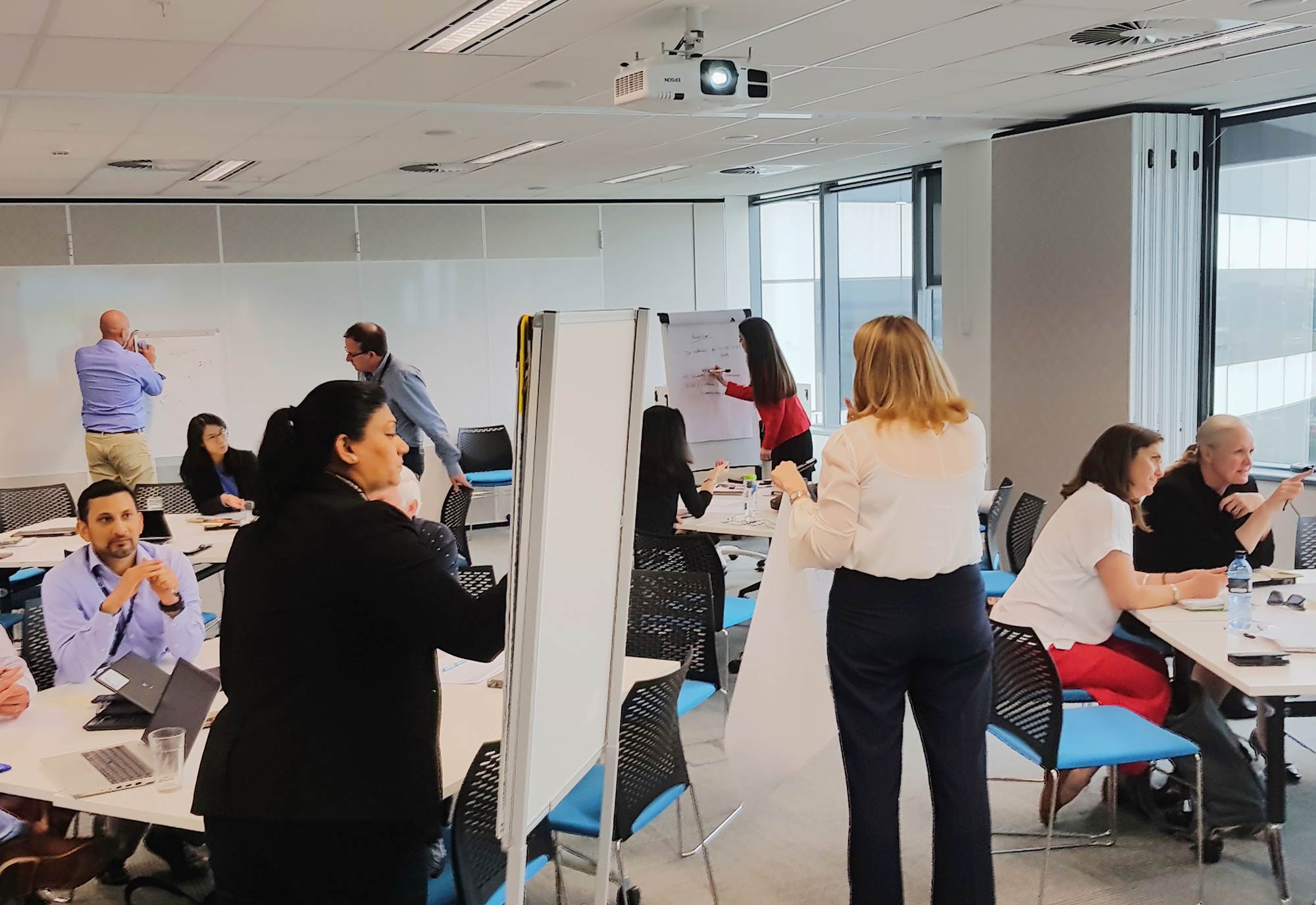
30 Aug Architectural Methodologies Explained
Know more of our DIGITAL & ICT STRATEGY capabilities.
In business, enterprise architecture is a discipline that provides a framework for incorporating the business strategy into an organization’s technology infrastructure. It is also known as information systems architecture, enterprise application architecture, or enterprise software architecture.
An architectural methodology is a system of principles and methods for designing and building said architecture. The selection of an appropriate methodology is critical to the success of any enterprise architecture initiative.
Methodologies help organizations to standardize their approach to designing and implementing architectures, which can improve the efficiency and quality of the development process. A good methodology also enables different architects to share their work and makes it easier for others to review and understand the architecture.
In this article, we will examine:
- What is an architectural methodology?
- The current best practices
- The different types of architectural methodologies
- How to select the right methodology for your organization
- Challenges you may face when implementing it
Ready? Let’s get started.
What is an architectural methodology?
Put simply, an architectural methodology is a system of principles and methods for designing and constructing enterprise architectures. It is used to guide the development process and ensure that the final product meets the organisation’s specific needs.
The term “methodology” can be used in different ways, so it’s important to understand what we mean by it in this context. In software engineering, a methodology is often associated with a particular approach to designing and building software applications.
For example, there are well-known methodologies such as Agile, DevOps, and Waterfall.
In enterprise architecture, the term methodology is used in a more general sense to refer to the overall system that an organisation uses.
There are many different types of architectural methodologies, each with its strengths and weaknesses. The selection of an appropriate methodology is critical to the success of any enterprise architecture initiative.
Current best practices
As of 2022, the most popular architectural methodology is TOGAF, which stands for The Open Group Architecture Framework. It is a vendor-neutral framework that has been adopted by many large organisations worldwide.
TOGAF
Developed in 1995, and based on the U.S. Department of Defense’s Technical Architecture Framework for Information Management (TAFIM), TOGAF was initially created to help government agencies standardize their enterprise architecture practices.
Just this year, TOGAF 10 was released, which includes a “modular structure [that] provides enterprise architects with greater guidance, and simpler navigation, for applying the TOGAF framework alongside its comprehensive fundamental knowledge base.”
This update makes it easier to use TOGAF in conjunction with other software and tools.
This all-in-one system is meant to support:
- Business architecture, which describes the enterprise from a high-level perspective, focusing on the business goals and objectives.
- Data architecture, which defines how data is structured and used within the enterprise.
- Application architecture, which describes the software applications that support the business.
- Technical architecture, which defines the hardware and software infrastructure that supports the applications.
This is done through what is called the Architecture Development Method (ADM), a repeatable process for designing and implementing enterprise architectures.
The ADM is made up of ten phases.
- Preliminary phase: In this phase, the enterprise architects develop an understanding of the business goals and objectives.
- Phase A – Architecture Vision: This is where the enterprise architects define the overall architecture strategy and approach.
- Phase B – Business Architecture: The business architecture is developed in this phase, which supports A.
- Phase C – Information Systems Architectures: The data and application architectures are developed in this phase, once again in support of A.
- Phase D – Technology Architecture: The technical architecture is developed in this phase.
- Phase E – Opportunities and Solutions: In this phase, the architects identify and assess opportunities for improving the architecture.
- Phase F – Migration Planning: A migration plan is created in this phase that will allow the enterprise to move from its current state to the desired future state.
- Phase G – Implementation Governance: This phase deals with ensuring that the architecture is implemented as planned and governing the overall process.
- Phase H – Architecture Change Management: In this penultimate phase, the architects put in place a mechanism for managing changes to the architecture.
- Requirements Management: Finally, in the last phase, the architects ensure that all requirements are being managed throughout the process.
TOGAF is a comprehensive framework that can be used by organisations of all sizes. However, it should be noted that TOGAF is not a methodology per se, but rather a toolkit that can be used to develop a custom methodology tailored to the specific needs of an organisation.
Other options
It is not alone, however. Other popular architectural frameworks include:

Source: The Open Group
Zachman Framework
The Zachman Framework, named after its creator John Zachman, is a widely used framework for enterprise architecture. It is based on the idea that every enterprise can be viewed as a collection of different types of information, usually represented by a six-by-six grid. The horizontal axis of the grid would be:
- What (Data)
- How (Function)
- Where (Network)
- Who (People)
- When (Time)
- Why (Motivation)
The vertical axis would list various roles or perspectives. The Zachman Framework is a powerful tool for visualising and understanding the different aspects of enterprise architecture, but it can be complex and difficult to use in practice.
Service-Oriented Architecture (SOA)
A service is a self-contained unit of functionality that can be accessed by other applications or systems. Services are usually designed to be reusable and platform-independent, so they can be easily integrated into different types of architectures.
For example, a service might provide a way to check the status of an order or to calculate the price of a product. SOA is often used in conjunction with other architectural frameworks, such as TOGAF or Zachman.
ITIL 4
ITIL 4 is the most recent version of the Information Technology Infrastructure Library (ITIL), a best-practice framework for managing IT service delivery.
ITIL 4 was released in 2019 and contains significant changes from previous versions, including a new focus on DevOps and digital transformation. It is also more closely aligned with other frameworks such as Agile and Lean, instead of being a siloed approach to IT management.
Each of these frameworks has its strengths and weaknesses, so it’s important to select the one that is best suited for your organisation’s needs.
How to select the right methodology
When choosing an architectural methodology, there are many factors to consider, such as the size of your organisation, the nature of your business, and your specific goals.
There is no one-size-fits-all answer when it comes to selecting a methodology. However, there are some general best practices that you can follow:
- Define your goals and objectives: What do you want to achieve with your enterprise architecture? Make sure that your chosen methodology is aligned with your goals.
- Consider your organisation’s size and structure: The methodology you choose should be appropriate for the size and structure of your organisation. For example, a large multinational company will have different needs than a small startup.
- Evaluate your resources: Do you have the necessary resources to implement the methodology? Make sure you have the budget, staff, and time to commit to the initiative.
- Consider your industry: Certain industries have specific requirements that must be met. For example, the banking and finance industry has strict regulations that must be followed.
- Consider your timeframe: How much time do you have to implement the methodology? Make sure you select a methodology that can be implemented within your timeframe.
Once you’ve considered these factors, you can start researching which methodology will best fit your needs, and supply you with all of the features and guidance that are required.
Challenges you may face when implementing it
As with any new system, there will be challenges you may face when implementing an architectural methodology. Here are some of the most common challenges:
- Lack of standardisation. One of the biggest challenges is that there is no one “right” way to do things. This can make it difficult to know where to start and what to do next.
- Resistance to change. Many people resist change, even when it’s for the better. You may encounter resistance from employees who are comfortable with the way things are currently done.
- Lack of resources. Another common challenge is lack of resources. Implementing a new methodology can be time-consuming and expensive. You may need to invest in training and tools to support the new system.
- Limited understanding. Many people don’t have a good understanding of architectural methodologies. This can make it difficult to get buy-in from senior management or other key stakeholders.
Here are a few ways to help in these cases:
- Look for existing standards. Search your industry for any existing best practices or guidelines that you can use as a starting point. This will help to provide some structure and direction for your project.
- Seek expert help. Don’t be afraid to seek help from experts. They can provide valuable guidance and support throughout the process.
- Be prepared to invest. Implementing a new methodology will require an investment of time and resources. Be prepared to make this investment upfront to reap the benefits in the long run.
- Make sure you and your team are properly trained on the new methodology. This will help to ensure a smooth transition and successful implementation.
The biggest part is to not give up when faced with an initial challenge, implementing a new methodology will be difficult, but the benefits will be worth it in the end.
- Tech Your Business Podcast - 26 February 2024
- Security Market Watch Podcast - 26 February 2024
- The Business Octopus Podcast - 15 February 2024













